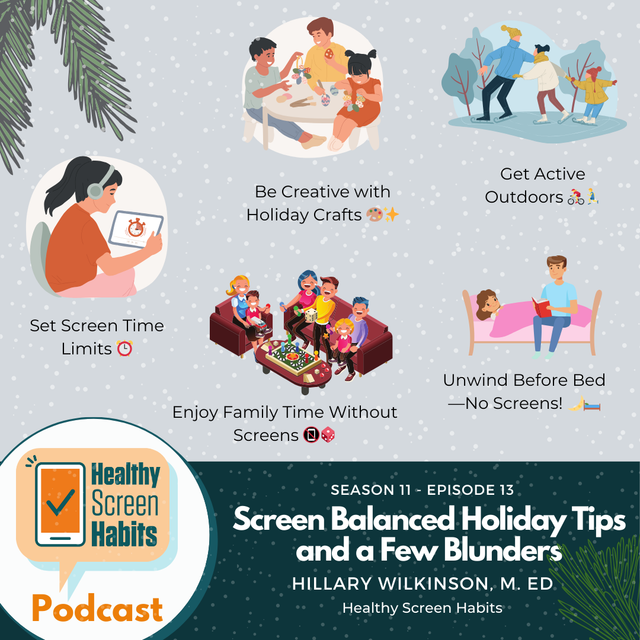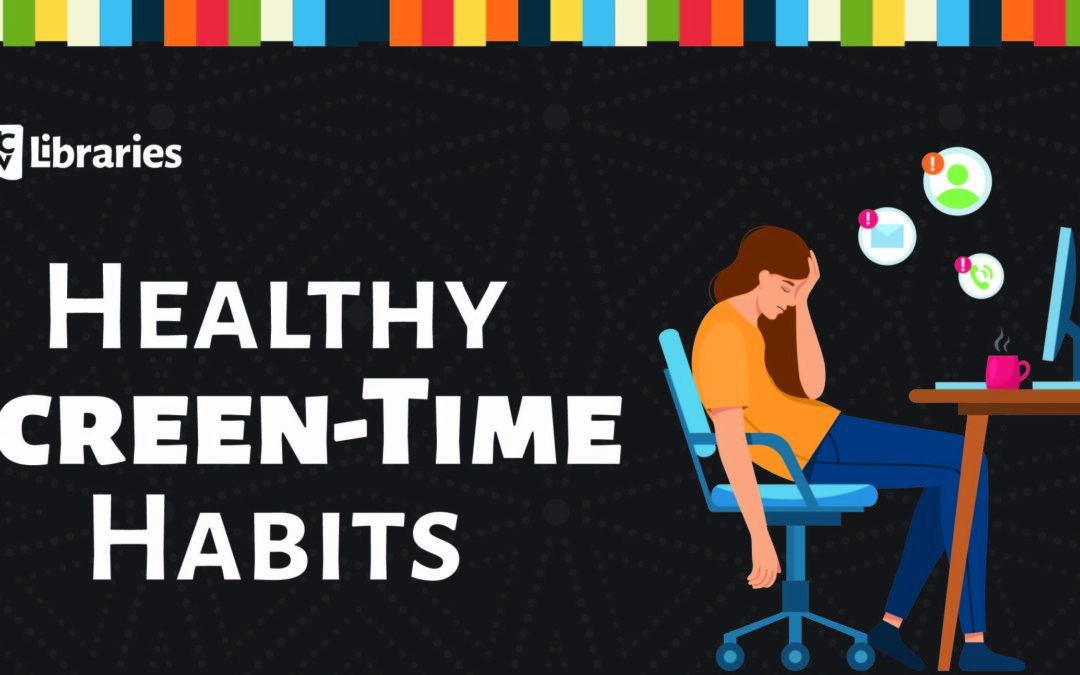Creating Healthy Screen Time Habits for a Balanced Lifestyle
Setting Boundaries for Screen Time
In today’s digital age, it’s easy to get sucked into the endless scroll of social media, binge-watching TV shows, and playing video games for hours on end. However, excessive screen time can have negative effects on our physical and mental well-being. That’s why it’s crucial to set boundaries for screen time to maintain a healthy balance in our lives.
One way to set boundaries is to establish specific time limits for screen use each day. For example, you could limit yourself to one hour of social media browsing in the morning and one hour of TV watching in the evening. Additionally, it’s important to take regular breaks from screens throughout the day to give your eyes and brain a rest. Set a timer to remind yourself to step away from your devices and engage in other activities, such as reading a book, going for a walk, or spending time with loved ones.

Another helpful tip is to create screen-free zones in your home, such as the bedroom and dining room. Keep devices out of these areas to promote better sleep and family communication. By setting boundaries for screen time, you can enjoy the benefits of technology without sacrificing your overall well-being.
Practicing Mindful Screen Use
Mindful screen use involves being aware of how and why you are using screens, as well as the impact it has on your mental state. It’s easy to mindlessly scroll through social media or watch TV without realizing how it’s affecting your mood and productivity. Practicing mindfulness can help you become more intentional with your screen time and make healthier choices.

Start by paying attention to how you feel before, during, and after using screens. Notice any changes in your mood, energy levels, and focus. If you find that certain activities or apps are causing stress or anxiety, consider limiting or eliminating them from your routine. Instead, choose screen activities that bring you joy and relaxation, such as watching a funny movie or video chatting with friends.
Another way to practice mindful screen use is to set goals for your screen time. For example, you could aim to spend less time on social media and more time engaging in hobbies or activities that nourish your mind and body. By being mindful of your screen habits, you can make conscious choices that support your overall well-being.
Engaging in Screen-Free Activities

While screens can provide entertainment and information, it’s important to balance screen time with screen-free activities that promote physical activity, creativity, and social connection. Engaging in activities such as reading, gardening, cooking, or playing sports can help you recharge and refocus away from screens.
One screen-free activity that can benefit your mental health is spending time in nature. Research has shown that being outdoors can reduce stress, improve mood, and enhance cognitive function. Take a walk in the park, go for a hike, or simply sit outside and soak up the sunshine. Disconnecting from screens and reconnecting with nature can help you feel more grounded and present in the moment.

Another screen-free activity to consider is practicing mindfulness or meditation. These practices can help you cultivate a sense of calm and clarity amidst the chaos of daily life. Set aside time each day to sit quietly, focus on your breath, and let go of any distractions. By engaging in screen-free activities, you can improve your overall well-being and find greater balance in your life.
Building Healthy Screen Time Habits for Children
As parents, it’s important to instill healthy screen time habits in children from a young age to promote their physical, mental, and emotional development. With the rise of digital devices and online content, children are spending more time in front of screens than ever before. By setting boundaries and modeling healthy screen use, you can help your children establish a balanced relationship with technology.

One way to build healthy screen time habits for children is to create a screen time schedule that includes designated times for screen use, homework, and other activities. Limit the amount of time children spend on screens each day and encourage them to engage in outdoor play, reading, and social interactions. Be a positive role model by demonstrating healthy screen habits yourself and engaging in screen-free activities as a family.
Additionally, it’s important to set rules and guidelines for screen use, such as no screens during meals or before bedtime. Encourage open communication with your children about the benefits and risks of screens and help them understand the importance of balance in their lives. By supporting healthy screen time habits, you can help your children thrive in a digital world while maintaining their well-being.
Creating a Screen Time Routine
Establishing a screen time routine can help you manage your time more effectively, reduce distractions, and improve your overall productivity. By creating a structured schedule for screen use, you can make the most of your time online while still prioritizing other aspects of your life.
Start by identifying your screen time goals and priorities. What activities do you want to focus on each day, and how much time do you want to allocate to screens? Create a daily or weekly schedule that includes specific time blocks for screen use, work, exercise, and relaxation. Use a planner or digital calendar to track your screen time and adjust your schedule as needed.
It’s also important to set boundaries for when and where you use screens. Avoid using screens in bed or during meals, as this can disrupt your sleep and social interactions. Designate a specific area in your home for screen use, such as a home office or living room, and establish screen-free zones in areas like the bedroom and dining room. By creating a screen time routine, you can enhance your focus, productivity, and overall well-being.
Practicing Digital Detox
A digital detox involves taking a break from screens and technology to recharge and reconnect with the world around you. In today’s hyper-connected society, we are constantly bombarded with notifications, emails, and social media updates that can be overwhelming and exhausting. By practicing a digital detox, you can give your mind and body a much-needed break from the demands of technology.
Start by identifying areas of your life where screens are taking up too much time and energy. This could include excessive social media use, email checking, or gaming. Set aside a designated period, such as a weekend or vacation, to disconnect from screens and engage in screen-free activities. Use this time to connect with loved ones, engage in hobbies, and explore the world around you without the distractions of technology.
During your digital detox, be mindful of how screens affect your mood and well-being. Notice any changes in your stress levels, sleep quality, and overall happiness. Use this time to reflect on your screen habits and consider making permanent changes to support a healthier balance in your life. By practicing a digital detox regularly, you can cultivate a more mindful and intentional relationship with technology.
Maintaining Healthy Screen Time Habits
Once you have established healthy screen time habits, it’s important to maintain them consistently to support your overall well-being. Consistency is key when it comes to managing screen use and finding balance in your life. By staying mindful of your screen habits and making conscious choices, you can create a sustainable routine that promotes a healthy relationship with technology.
One way to maintain healthy screen time habits is to track your screen time and evaluate your progress regularly. Use apps or tools to monitor how much time you spend on screens each day and make adjustments as needed. Set reminders to take breaks from screens and engage in other activities that support your well-being, such as exercise, meditation, or socializing with friends.
Additionally, it’s important to stay flexible and adaptable with your screen time routine. Life is full of unexpected changes and challenges that may impact your screen habits. Be willing to make adjustments to your schedule and priorities as needed to maintain a healthy balance between screens and other activities. By staying committed to your healthy screen time habits, you can enjoy the benefits of technology without sacrificing your overall well-being.
Conclusion
In conclusion, creating healthy screen time habits is essential for maintaining a balanced lifestyle in today’s digital world. By setting boundaries, practicing mindfulness, engaging in screen-free activities, and building routines, you can find a healthy balance between screens and other aspects of your life. Remember to prioritize your well-being and make conscious choices that support your mental, physical, and emotional health. With mindful screen use and healthy habits, you can enjoy the benefits of technology while living a fulfilling and balanced life.